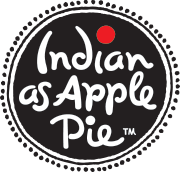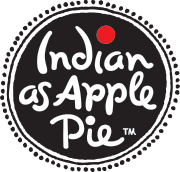January 14, 2014
In Hindi, whenever we finish a monumental task, we like to say, 'Muh mitha karo'. Roughly translated, this means - to make your mouth sweet. It's a way to mark your accomplishment - to make you feel special and to recognize the auspiciousness of the event.
Last week, I handed in the manuscript for my third cookbook, "Indian For Everyone,' which will release later this year (2014). It was 328 pages and 64,000 words of pure accomplishment. Hitting 'send' on my computer keyboard was like a weight was lifted off my chest - a weight that I'd lived with for the last year. I woke with it every morning knowing that I had so many recipes to get through, but such limited time because I also had the kids to get ready for school - a business to grow - product to develop - and a blog to update.
The cookbook thrived. It had to - I had a deadline. The kids were fine for the most part (there were a few birthday parties forgotten along the way), and my product development happened ever-so-slowly, but my blog slowed down a bit. I guess something had to give (my personal sanity is another). But, none of you gave up on me. So, thank YOU for that and it's for this very reason that I am sweetening your mouth with this recipe, so we can celebrate the new book and the New Year - together.
Halwa means different things to different cultures with one similarity - it's a confection, a sweet. In Indian cuisine, it's a sweet combination of flour, sugar, water, and butter. It's soft, almost like a bread pudding. And, it holds a ton of cultural meaning.
We always make halwa on special occasions, especially for religious ceremonies. If you head to a Hindu Temple, after the prayers, the pandit, or priest, doles out oily balls of this sweet flour, at once warm and delicious into your outstretched hand. You pop it into your mouth - secretly screaming for more. My mouth is watering as I type.
Now, most Indian families know of Halwa made from cream of wheat. But, in our Punjabi family, we only ate the version made from whole wheat chapati flour. My mother tells me that when she was growing up, it was more common to make it the first way in the bigger cities. Meanwhile, folks in villages that could not source or afford cream of wheat stuck with basic flour.
This last year my husband and I have tried to go gluten-free. Less for the medical reasons, but more for the weight loss goals of kicking out what we saw as unnecessary carbs in our diet. It's helped me tremendously (that's a story for another time) - and has helped me think outside the box with wheat-based recipes like this one.
I was in shock when I tried to make this recipe with quinoa flour - and it actually worked! I mean. It not only worked - it was bleeping delicious. (And, yes, after the shock wore off, I was seriously dancing - because nothing makes me happier than healthy food that is just off-the-charts delicious, too).
So, here you go. Make this recipe for yourself and realize how incredibly easy it is. Also, keep in mind, it's a great example of what all the recipes will look like in my next cookbook. Each one will give you tested ways to make them vegan, vegetarian, and even gluten-free in some instances (where it makes sense). Truly a book for everyone.
Atta ka Halwa
Yield: 2 cups
The story goes that when my mother first visited my father’s village as a new bride, she was horrified when she was offered this seemingly crass version of halwa. In her larger town, it was made from cream of wheat rather than just wheat flour. But, it took just a few bites to convince her that this village version of this dessert used in prayers and made during festivals is actually superior in taste to any other you will eat. My mouth still waters thinking about the hot, warm ball of sweet dough made sweeter by the random juicy raisin. Run – don’t walk – to make this.
Tools: You'll need a heavy-bottomed 4-quart pan with lid, a medium-sized pot to boil water, and a mortar and pestle (for the cardamom).
1 1/2 cups water
1/2 cup sugar (regular or Sucanat)
2 tablespoons golden raisins
1/2 cup ghee or unsalted butter
3/4 cup chapati flour (atta) whole wheat flour
6 – 8 almonds, roughly chopped
½ teaspoon cardamom powder (the finer the better)
Ground pistachio and/or almonds for garnish
1. In a medium-sized pot add water, sugar, and raisins. Bring to this mixture to a boil and gently simmer while prepping your remaining ingredients. Using Sucanat will give your halwa a browner color.
2. In a separate heavy-bottomed 4-quart pan, heat ghee or butter over medium-high heat. Once melted, add flour and mix well. Cook for 10 minutes, mixing occasionally to prevent the mixture from sticking.
3. Add almonds and cardamom. Mix well. Keep cooking and mixing for another 2 minutes until the mixture becomes very aromatic. It will also start to pull away slightly from the sides of your pan. I prefer the cardamom ground into a fine powder - put a little muscle behind your mortar and pestle.
4. Turn your heat to high, and with the lid of the pan handy, very carefully pour your water mixture into the pot with the butter and flour mixture. Everything will initially steam and splash up, so be ready to cover it with a lid. As it calms down, keep mixing it well. Cook for another 5 minutes until your flour mixture pulls away from the sides of the pan.
5. Turn the heat off, put the lid on the pan and let your halwa sit for 5 - 10 minutes to settle. (If you can wait that long.) Garnish with ground pistachio and almonds and eat warm as a dessert or on the side with fresh puris and a curry. We just adore the sweet and sour tastes all in one bite.
Vegan-ize it! You can easily substitute oil for ghee or butter (canola, vegetable, or grape seed). The first time my mother and I tried this substitution we were amazed by how much more we liked the halwa. It tasted cleaner, but still felt authentic. Earth Balance worked, but was a little salty. Make it gluten-free: I was hopping up and down when I successfully made my favorite dessert without wheat gluten. Substitute quinoa flour for the whole-wheat flour. Follow the above steps, but cook it about 8 minutes rather than 10 in step 2. The flour is a little thinner and more delicate, so I found that I had to mix it continuously to make sure it did not burn. But, take it from me, it was delicious - I couldn’t even tell the difference.
Keep cooking folks...and please keep commenting on this thread. I need to hear from you to keep my motivations up, up, up. I don't take advertisements on this website from anyone (though they have tried), because I want to keep it clean for all of you. But, that means I need your energy to keep mine going.
Also, I am trying to hit 20,000 likes on my Facebook Fan page, Indian As Apple Pie. Check it out for more daily cooking tips.
Keep Cooking! xoxo Anupy
Comments will be approved before showing up.

